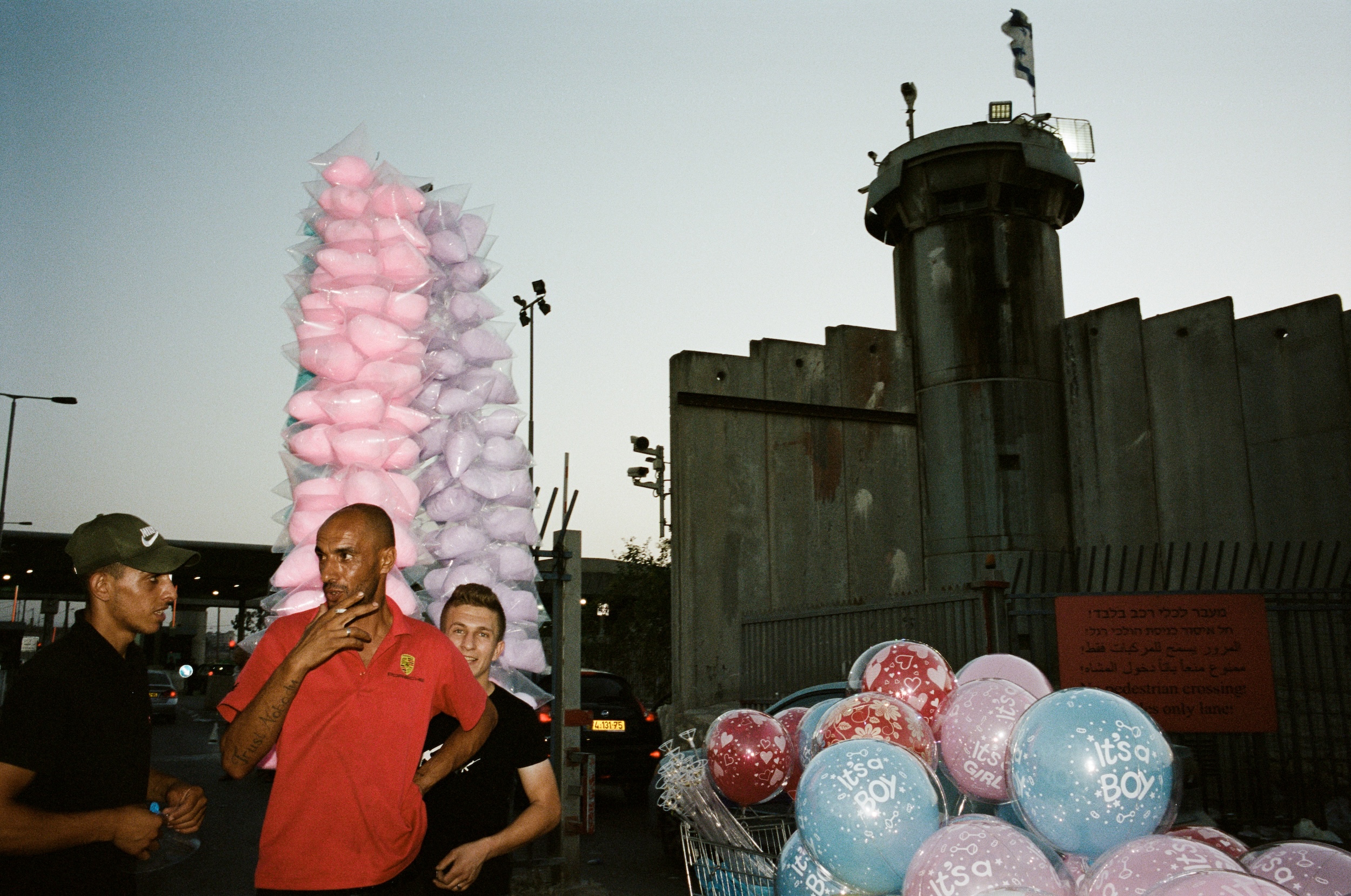© Adam Rouhana. All images courtesy the artists
Beyond Gaza, image-makers are creating representations of Palestinian life that challenge western stereotypes and find beauty in the everyday
“The internet went down again and believe me or not I was happy. Because after what we show to the world they just said we are soo sorry and no one did a thing. People share my stories and pictures and the second post for them in their [Instagram] stories is them having fun. So, no need to share anything and we don’t want your pity! [sic]”
In November 2023 Motaz Azaiza shared these words via his Instagram account, @motaz_azaiza. The text, white against a black background, starkly conveyed the Palestinian photojournalist’s anger and frustration to a growing audience. Prior to the Hamas-led attack on 07 October, during which approximately 1200 Israelis died, his account had garnered around 25,000 followers. At the time of writing, following months of Israeli bombardment and a reported death toll of over 25,000 Palestinians in Gaza, his follower count is over 18.5 million.
As one of few photojournalists in Gaza during this period, Azaiza’s unfettered portrayals of devastation across the territory gave Instagram users an often harrowing insight into life on the ground. With at least 83 journalists reportedly killed there since 07 October, and with communication often proving difficult or even impossible for the world’s biggest news outlets, his images showed an otherwise under-reported perspective. His work already stands as an essential record of the conflict, and his determination to bear witness a lesson in heroic journalism.
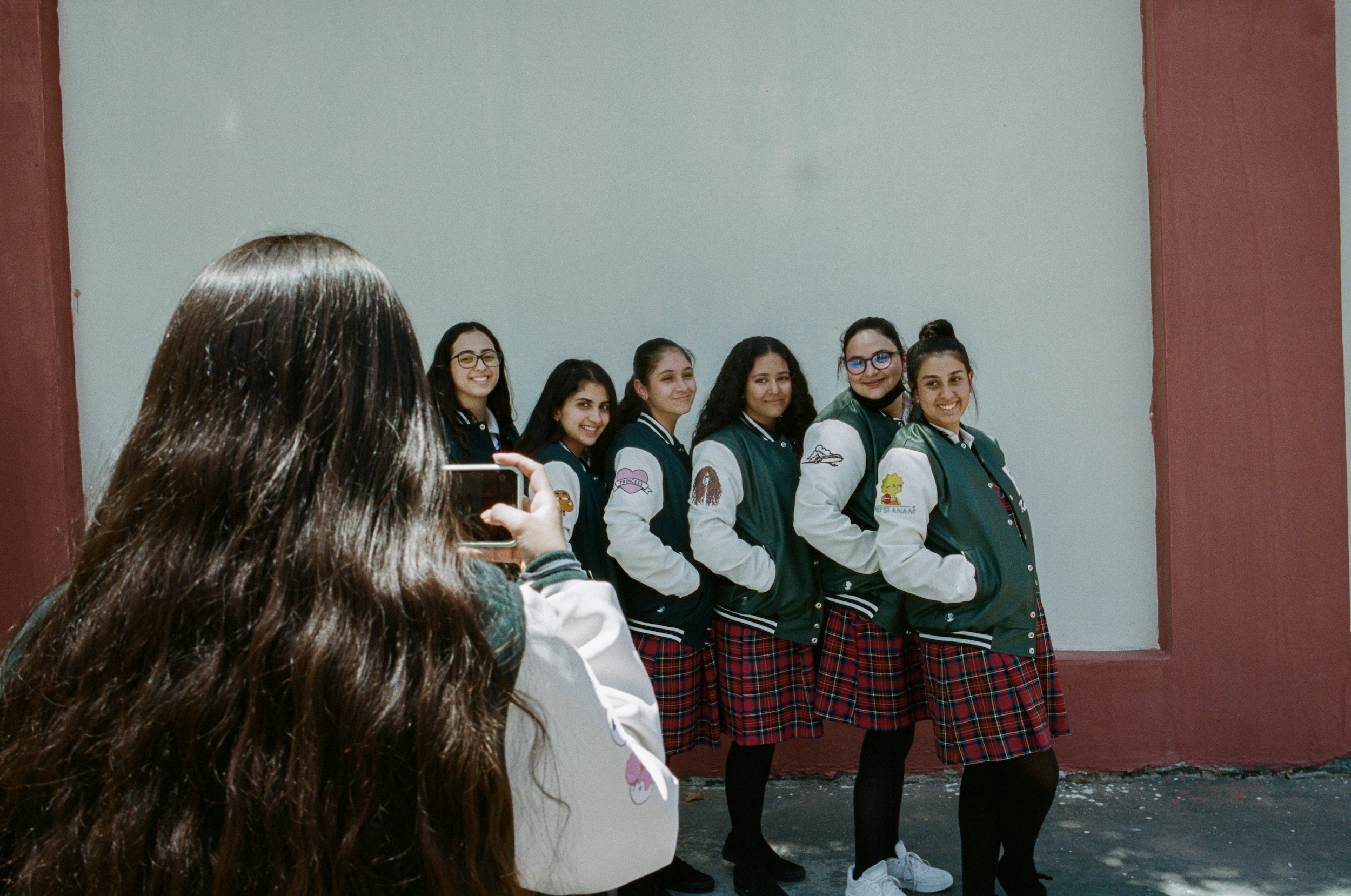
“In one of my earliest memories in Palestine, I am sitting in my Teta’s [grandmother’s] lap. Our hands work together to separate grape leaves from their vines. The essence of ripe fig fills the air with the calm satisfaction of late summer”
Yet, Azaiza has since been forced to leave Gaza, announcing via an Instagram post on 23 January 2024 that he was being evacuated. “…Please I just did a duty, I spent my whole power on showing the truth and it didn’t stop,” he wrote, as messages of support, solidarity, thanks and hopes for his future safety flooded in from followers. Following his departure, it is unclear how many image-makers remain in Gaza. However, across the region there are certainly photographers who have chosen – or been forced – to stay. They too have important stories to tell.
For Adam Rouhana, these stories began during his childhood. Throughout his youth, the Palestinian-American photographer made regular visits to his family on Mount Carmel, a mountain range located roughly 100 miles north of the Gaza Strip. “In one of my earliest memories in Palestine, I am sitting in my Teta’s [grandmother’s] lap,” he recalls. “Our hands work together to separate grape leaves from their vines. The essence of ripe fig fills the air with the calm satisfaction of late summer.” Rouhana describes this moment as paradise.
In the years since, he has returned to Mount Carmel annually, developing a photographic practice that began when he was around 12 years old and first picked up his family’s point-and-shoot camera. His images offer an alternative narrative to the one commonly seen and heard in the west, instead presenting a view of community and everyday Palestinian life. “I believe that by decolonising photography of Palestine through the internalisation of localised image-making, we can decolonise our minds and achieve a more nuanced understanding of Palestinian reality,” he explains.
To this end, his photographs sit somewhere between documentary and art. They are records, but they also illustrate wider ideas around the beauty of apparently mundane scenes, and the resilience of those striving for survival. A portrait of a young boy with his eyes closed, biting blissfully into a watermelon, offers a moment of colour and uninterrupted joy. His pleasure is as palpable as the ripe fruit grasped in his hands.
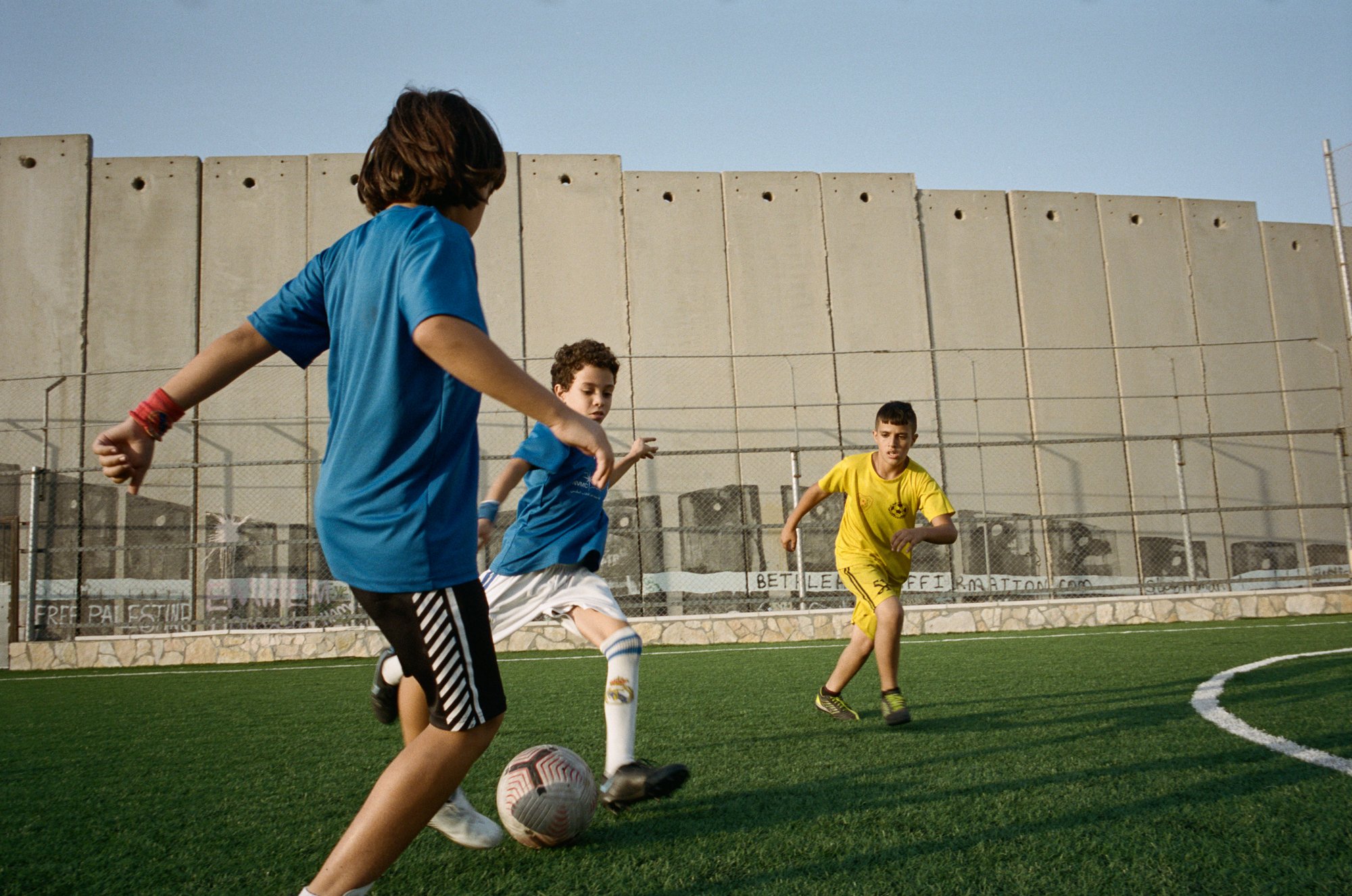
In Regarding the Pain of Others, Susan Sontag notes that “photographs lay down routes of reference, and serve as totems of causes… Photographs that everyone recognizes are now a constituent part of what a society chooses to think about, or declares that it has chosen to think about”. Rouhana references this passage, pointing to the colonial narratives present in many visual representations of Palestinians, and how they can contribute to dehumanisation.
“My photography works in opposition to that force of erasure,” he explains. “The simple act of photographing life in Palestine stands against the dominant hegemonic doctrine that tries to erase our presence not only historically within the archive, but also by enabling the genocidal physical expulsion that Palestinians are resisting so bravely today.” The photographer, who acknowledges his own position as someone of dual heritage, goes on to describe image- making as a negotiation with reality. Through this negotiation he hopes to facilitate a transfer of power, from “foreign actors” and a western lens, into the hands of the Palestinian people.
Earlier this year, Rouhana returned to Jerusalem – the gravity of this move is not lost on him. “Palestinian photographers and photojournalists, many of whom are providing the only available information right now about Israel’s genocide in Gaza, are building a contemporary Palestinian visuality, with an active ethic of self-determination,” he says. “As Issam Nassar, Stephen Sheehi and Salim Tamari have written, our photographs are a lived and living social fact.”
Fellow Palestinian photographer Samar Hazboun has fond memories of her own, very different journeys to Jerusalem; childhood drives taken with her father to buy baked sesame bread, along roads which were then surrounded by trees. “It was like a family ritual we had,” she recalls, before describing how such trips are no longer possible. Since 07 October, the permit she requires to travel to Jerusalem from her home in the West Bank – a little over 40 miles from Gaza – has been revoked.
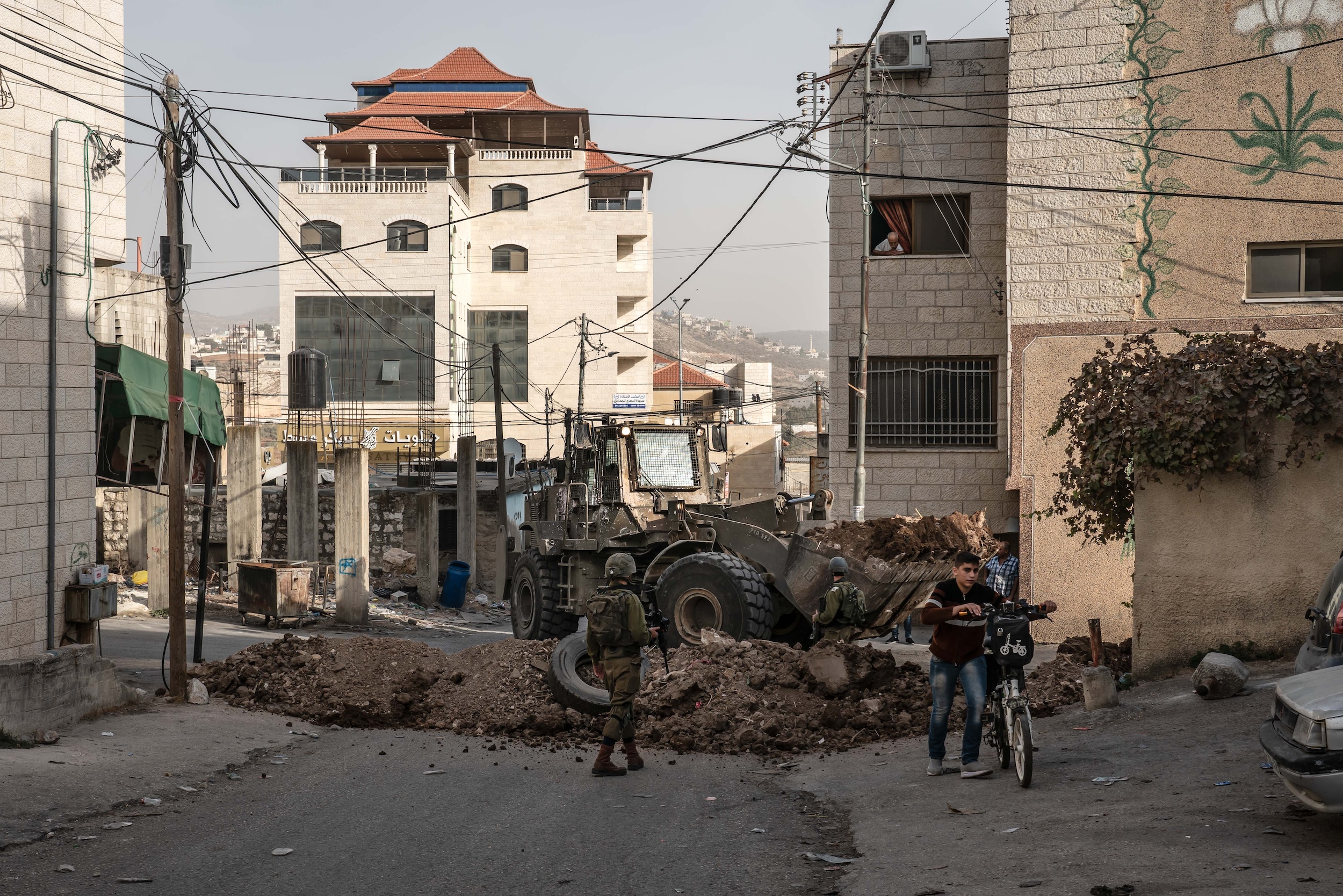
This restriction, and many others like it, has left Hazboun with what she describes as a wound of longing. “Today this wound has deepened and will possibly become a chronic one which I’ll have to live with for the rest of my life,” she says. “As Gaza is being erased, I watch the harbour where I ate shrimp for the first time in my life as a child get erased. Nothing will ever taste the same.”
Like Rouhana, Hazboun’s fascination with image-making began in childhood. She spent hours dancing in front of her mirror, studying the movement, shape, colour and form in her own reflection, using her imagination and the potential of visual language to create mental pictures. As she grew older, fears that she would struggle to make a living kept her from photography for some years. But she eventually embarked on an MA in photojournalism, alongside studying photo and video therapy.
Her recent practice combines documentary work, as seen in The New York Times, and highly emotive, personal portraiture, focusing on dispelling myths and misconceptions about Palestinians. Her personal project Errant Doves combines faceless portraits with often ghostly landscapes and poignant testimonies, in a bid to “shed light on truth and the reality of the LGBTQ community here… Which I’d like to say is still no different to many areas in Europe and the States,” the photographer continues. “Queer communities everywhere are still struggling and Palestine is no different.”
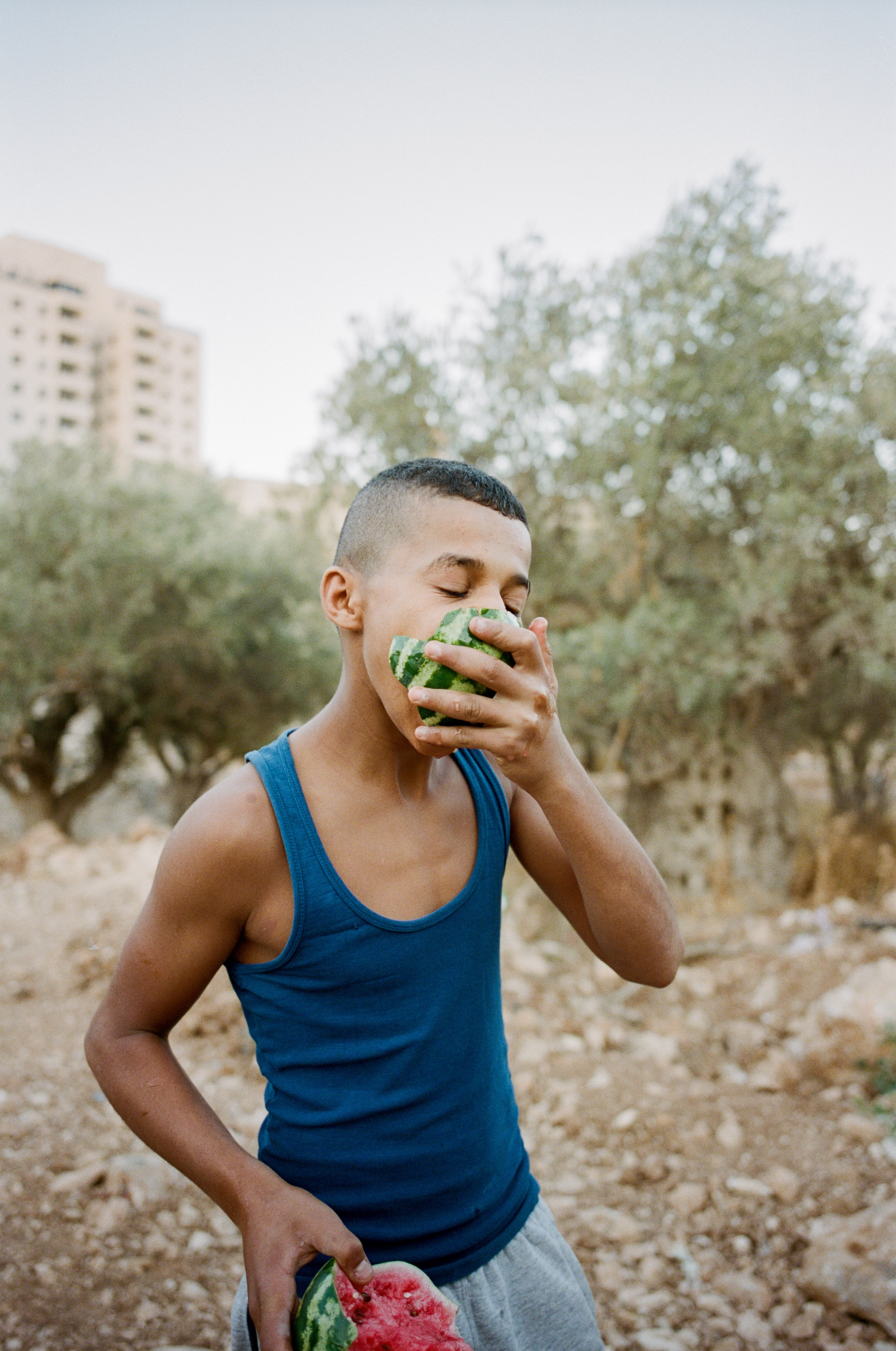
Hazboun says she hopes the work can be viewed by western audiences without being considered “exotic”; like Rouhana, she talks of western media narratives which, she says, too often portray Palestinian people as “backwards, uneducated, violent, radical”. She points to images seen recently around the world – images of men and women digging children from the rubble with their bare hands – as evidence to the contrary. “That’s the point I’m trying to make about the world’s perception of us, this idea that we are not humans who have the same needs and the same emotions,” she says.
Despite her dedication to this message, Hazboun has found it increasingly difficult to make work since 07 October. The introduction of checkpoints and a rise in violence in the West Bank has made travelling to complete assignments almost impossible – and has led her to change her approach. “I’m contemplating ways in which to put the stories out once people are exhausted by stories from Palestine and fatigue takes over,” she explains. “We need to be innovative and we need to work even harder than we have done in the past.”
The exhaustion Hazboun references is compassion fatigue, the idea that over- exposure to images of suffering causes an emotional disconnect – a problem exacerbated by the digital age’s near- constant cycle of graphic content. “How can we preserve the dignity of those who were killed and remember them in the most dignified way, yet not erase what has been done to them?” the photographer asks. She is currently attempting to answer this question by turning her own grief into images.
“I’d like to ask the world for curiosity, intention and action,” she says. “Now more than ever we need support. If all you can do is watch the horrific genocide as it unfolds on your screen, then watch it. Bear witness to us. If that is all that is in your power right now, simply bear witness.”

